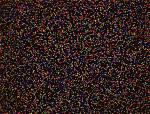When DNA is replicated in an organism during cell division, the base pairing property is used to synthesize a copy of the DNA string that is complementary. The natural proteins used in DNA replication are also used in the lab to synthesize copies of the DNA.
Say we have a single-stranded DNA like this:
5′-ACCGTACGTTGC-3′
We can use DNA polymerase to make a complementary copy of the DNA. DNA polymerase is a protein enzyme that helps synthesize new strings of DNA by copying an existing string. The synthesis happens from 5′ to 3′, like this:
5′-ACCGTACGTTGC-3′
Here, 12 letters of the bottom string have been synthesized, copying the top string using the complementary pairing rules (A-T and C-G). It turns out that DNA polymerase can’t just copy a ssDNA; it needs a bit of the second DNA string that is complementary to the first string to start the synthesis. For example:
5′-ACCGTACGTTGC-3′
3′-ACG-5′
The bottom string of three letters 3′-ACG-5′ starts the process of synthesis and the DNA polymerase adds to this string using the top string as a guide. This little bit of starting DNA sequence is called the primer , meaning that it primes the DNA polymerase copying reaction. (Primers in an organism’s cell are typically made of RNA. In the lab, we typically use DNA primers.)
The whole DNA synthesis looks like this:
5′-ACCGTACGTTGC-3′
.……..........3′-AACG-5′
5′-ACCGTACGTTGC-3′
.…...........3′-CAACG-5′
5′-ACCGTACGTTGC-3′
….........3′-GCAACG-5′
5′-ACCGTACGTTGC-3′
.……....3′-TGCAACG-5′
And so on. DNA sequencing starts with the single strand of the DNA we want to sequence then uses the DNA polymerase to synthesize a new complementary, double-stranded DNA, like this:
5′-ACCGTACGTTGC-3′ —> 


 Discovering the Genome
Discovering the Genome